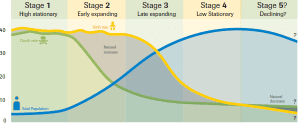Sometimes the terms “life span” and “life expectancy” are used interchangeably, but they have different meanings. So what is the difference between life span and life expectancy?
Life span is the number of years that one person lives. We can calculate an average life span of people in a group if we have birth and death dates for its members. You will have only one life span.
Life expectancy is also based on averages, but it’s the number of years that someone is expected to live from a specific starting point. Your own life expectancy changes as you grow older, and as you face different risks.
Consider this: Many infants and young children in America used to die due to infections. High infant and child mortality kept life expectancy (which is usually expressed as life expectancy from birth) low until well into the 20th century, but once people passed those vulnerable early years, the life expectancy was much higher. For instance, the life expectancy for a female born in 1900 was about 48 years old, but if she reached age 20, her life expectancy was over 60, and at age 40, her life expectancy was nearly 70.
The graph displayed here shows how life expectancy changes from 1850 to 2000 C.E. (Also check out an interactive version of the graph where you can click on buttons to see how life expectancy was different for men and women, and for people at different ages.) It’s likely that you will find more children’s graves in the older part of a cemetery because infant and child mortality rates were so much higher before antibiotics and vaccines became widely available.
Sometimes, when we tell kids “the life expectancy was 48 in 1900,” they think that means that at age 48, people were old and decrepit instead of understanding that 48 was an average, and the high child mortality brought that average way down. Consider the example of our Founding Fathers. When they were born in the 18th century, life expectancy was below 40. Yet the average lifespan of the 56 signers to the Declaration of Independence was 66 years, and a quarter of them (including Thomas Jefferson, John Adams, and Ben Franklin) lived to 80 or older.
This article, originally “Life Span and Life Expectancy” was published in 2013 in Social Studies and the Young Learner, a publication of NCSS.



